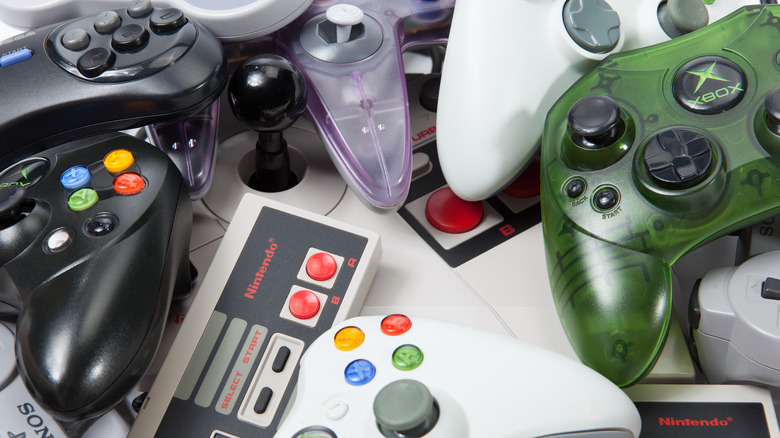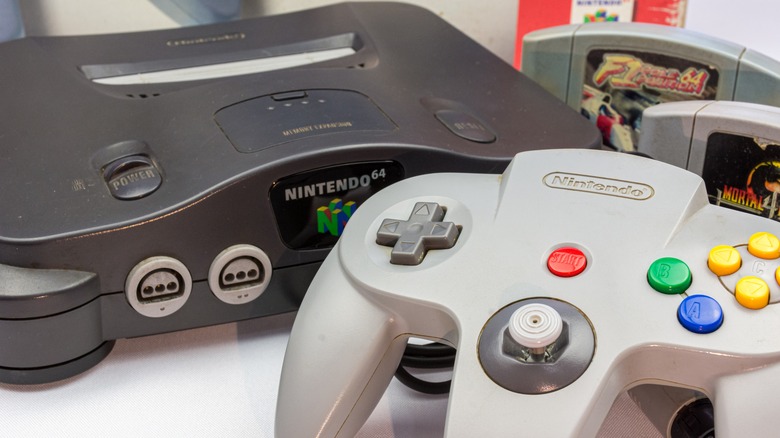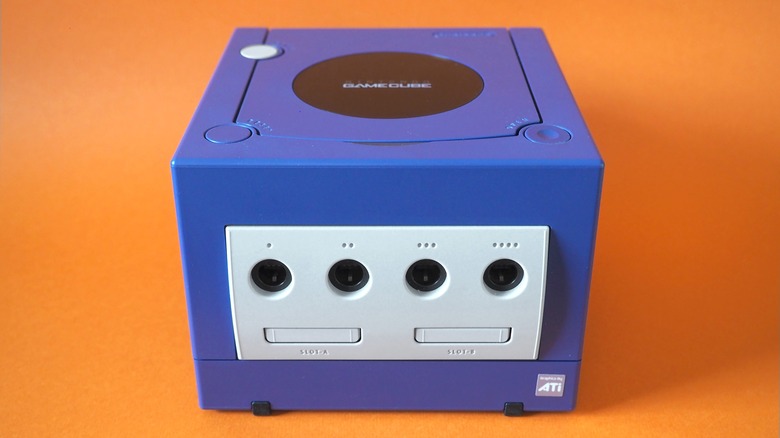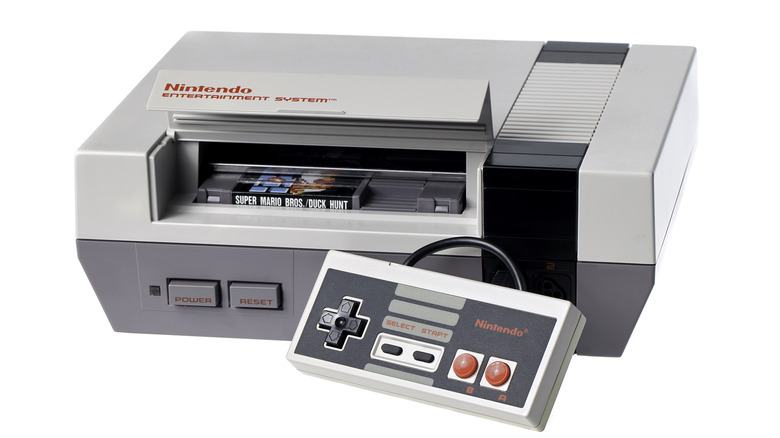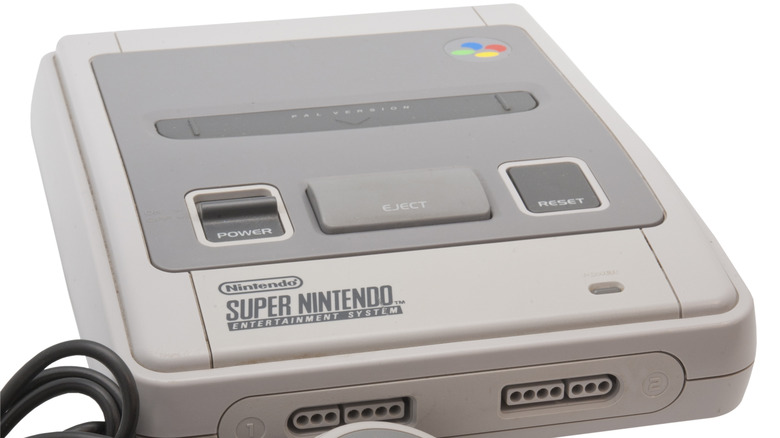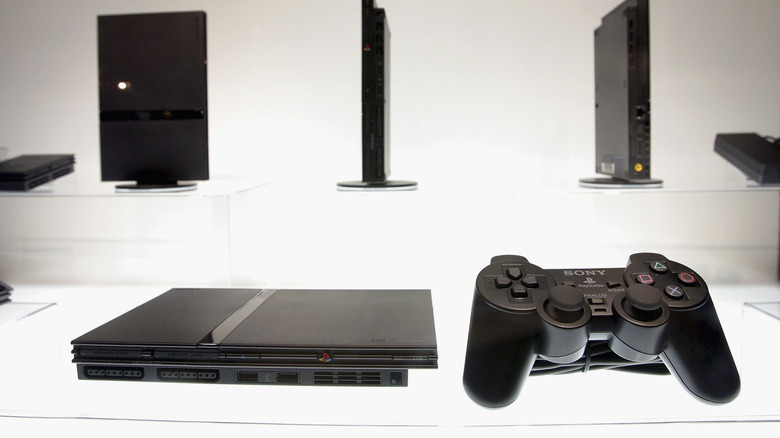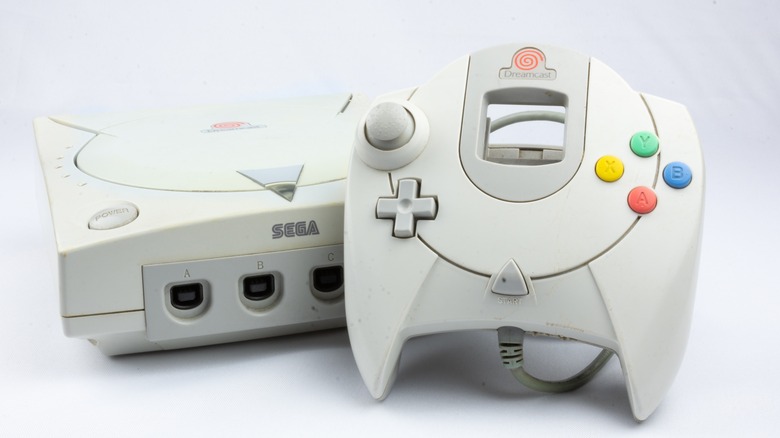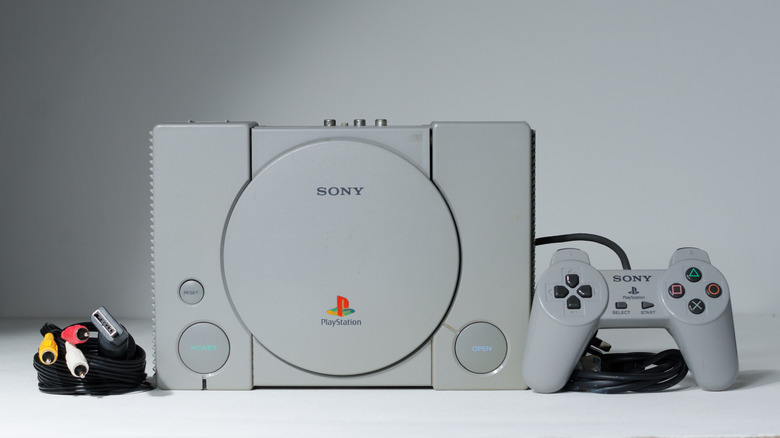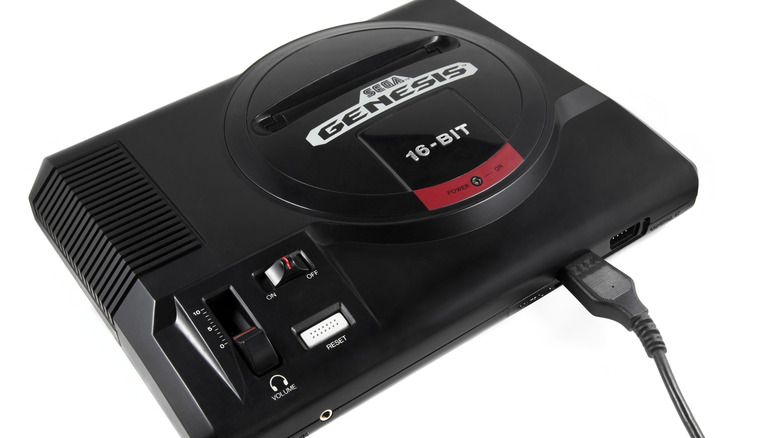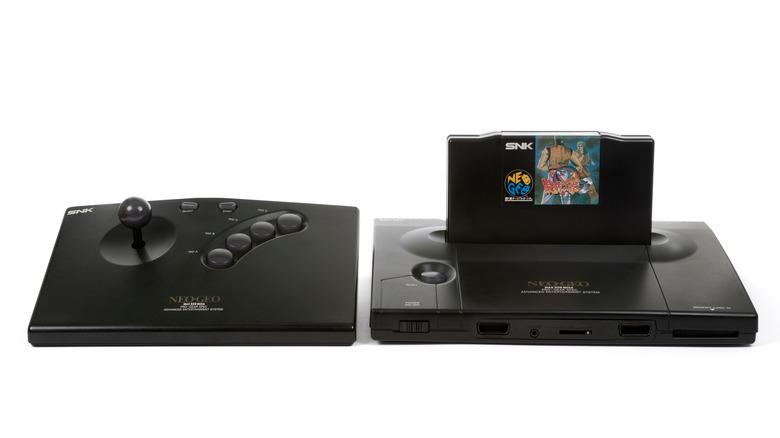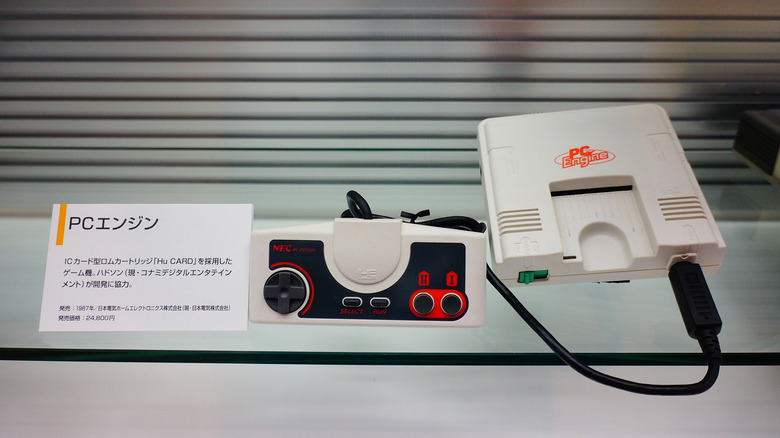10 Retro Gaming Machines Still Worth Buying In Used Condition (If You Can Find Them)
Like all forms of technology, gaming follows a never-ending trend of advancement. Each successive console is capable of doing extra things, running more impressive software, and making gaming more accessible and on-demand than before. Nowadays, we are used to consoles that can stream games over the internet and let us play with hundreds of other people in shared worlds. They're more like entertainment hubs than mere gaming machines.
Yet, that doesn't mean it isn't fun to look back at older systems. Lots of people still buy and collect old school hardware, and not just because of how valuable retro games consoles can be. Many of them were incredibly influential, impacting the entire industry, in addition to being home to games that are not available to play legally elsewhere. So if you want to experience a slice of gaming history and try out brilliant titles that still hold up today, these retro gaming machines are still worth buying, even in used condition.
Nintendo 64
The fifth generation of video game consoles introduced the Sony PlayStation and Sega Saturn to the world. Both systems used the CD-ROM format for games, but Nintendo chose to stick to cartridges with the Nintendo 64. This was something of a surprise and led to some developers such as "Final Fantasy" studio Square switching to PlayStation due to the increased storage size with CD-ROM — although cartridges did offer advantages in areas such as load times. Yet, the Nintendo 64 still managed to be home to a wide range of impressive games, with groundbreaking titles such as "The Legend of Zelda: Ocarina of Time" and "Super Mario 64."
Initially released in 1996, the Nintendo 64 was the Japanese company's primary console up until the launch of the GameCube in 2001. Equipped with a bizarre three-pronged controller that heralded the start of Nintendo's strange controller designs, the console also made use of a Rumble Pak for force feedback and had four controller ports for local multiplayer. Some Game Boy and Game Boy Color games could also be played or transfer data through the Transfer Pak, which allowed you to plug handheld games in via the controller.
All of these features made the Nintendo 64 truly unique. It's something every gamer should at least try, and a worthy addition to any collection. It is also still the only way to play great games not available on Nintendo Switch Online, like "Castlevania 64," "Diddy Kong Racing," and "Star Wars: Rogue Squadron."
Nintendo GameCube
Nintendo hasn't had too many missteps with its video game consoles over its history. Sure, there have been failures such as the Wii U and Virtual Boy that completely flopped, but they have been exceptions rather than the norm. It would be unfair to categorize the GameCube entirely as a failure. After all, it sold over 20 million units across its lifetime and was on a par with the likes of the PlayStation 2 and Xbox technologically. Yet, there's little denying that it failed to capture the public's attention.
The GameCube is, in many ways, an underrated console that never quite managed to live up to its potential. Launched in 2001 for just $199, the console was discontinued in 2007 and replaced with the Nintendo Wii. In that time, it managed to amass a brilliant library of games and some interesting peripherals, like the Game Boy Player, which allowed the console to run various Game Boy, Game Boy Color, and Game Boy Advance titles. A tiny form factor and a handle on the back also made it a uniquely portable system.
The real reason that it is worth picking up a GameCube today is that there are many games on the console you can't easily or legally play elsewhere. Whether its "Star Wars Rogue Squadron II" and its sequel, "Eternal Darkness," "Donkey Kong Jungle Beat," or "Fire Emblem: Path of Radiance," there are plenty of great games worth playing.
Nintendo Entertainment System
The Nintendo Entertainment System is where it all started for the Japanese company. The NES not only marked Nintendo's first entry in the home console market but also established it as a major player in the industry — a position that it has held ever since. First arriving in Japan in 1983, the console didn't see a wide release in the United States and Europe until 1986. Avoiding video game references at first in an attempt to market the console as a toy, the NES became an instant success and is widely attributed to reviving the industry after the video game crash of 1983.
The console also spawned many of the most recognizable franchises in gaming history. There's a huge library of games, ranging from Nintendo-made classics like "Super Mario Bros.," "Metroid," and "The Legend of Zelda," to third party series like "Final Fantasy" and "Castlevania." With well over 700 licensed games and more than 1,400 in total, the NES has a wealth of games, many of which are not available elsewhere.
Despite the age of the console, it is still fairly easy to find working models and there are several variants to choose from. The fact that the vast majority of games for the system are also relatively cheap means that this is a great console for collectors who want to own a piece of gaming history on a budget.
Super Nintendo Entertainment System
With the success of the NES, it was almost certain Nintendo would release a follow-up console. The new system arrived in Japan as the Super Famicom in 1990 before making its way to other territories throughout the world in the form of the Super Nintendo Entertainment System (SNES). As the name suggests, this was an evolution of the previous console, moving to 16-bit microprocessors rather than the 8-bit of the previous generation. The SNES also introduced a more advanced controller that featured additional face buttons and two brand new shoulder buttons, giving developers more gameplay options.
Just how much a Super Nintendo is worth depends on the condition and whether it comes with its original box and accessories. Loose secondhand models can go for less than $100, so it doesn't necessarily require a huge investment. That's good news considering that the SNES is one of the most influential consoles of all time.
If you want an idea of just how loved the SNES is, just take a look at how quickly the SNES Classic sold out when it was launched in 2017. The modern miniature version of the console is a good showcase of the brilliant games available on the original system. It was a time that saw Nintendo release outstanding titles such as "The Legend of Zelda: A Link to the Past" and "Super Mario World" while third parties launched a string of hit RPGs.
Sony PlayStation 2
Of all the retro consoles that you can buy and still enjoy today, the Sony PlayStation 2 is arguably the most influential and important. The successor to the original PlayStation arrived in Japan in early 2000 and made its way to the rest of the world over the following months in time for the holiday season. It completely demolished its competitors, with the Dreamcast, GameCube, and Xbox all failing to match it in terms of units sold. In fact, the PS2 went on to sell over 160 million consoles during its 12-year lifespan.
Building on the success of the PlayStation, the PS2 concentrated again on 3D worlds and advanced high quality graphics, made possible through the powerful Emotion Engine. It had countless brilliant games, many of which are simply not available elsewhere. This is largely a result of the PlayStation 3 not being fully backward compatible. So if you want to play some of the very best games of the sixth generation in all their glory, an original PS2 is the only way to do so.
Those who want to pick up the PS2 will like that it is backward compatible with the original PlayStation, allowing you to use the gray DualShock controller and play all previous PS1 games. Throw in the 4,000 games that were released for the PS2 and you have an almost unparalleled library to play through on this platform. Thankfully, the fact that the PS2 was produced in such great numbers means it is easy to pick one up used, often for well under $100.
Sega Dreamcast
After the disastrous launch of the Sega Saturn, the Dreamcast was Sega's last roll of the dice. Failure here meant total decimation, with tough competition coming not only from Nintendo and Sony but also Microsoft's new Xbox system. Unfortunately for Sega, the Dreamcast failed to appeal to a mass audience and it discontinued the console in March 2001 to focus fully on developing games for other platforms. There are a number of reasons why the Dreamcast flopped. The main one is simply that it couldn't compete with the PlayStation 2 and lost support from third-party developers like EA.
Launched in 1998 in Japan, with other territories following suit over the next year, the Dreamcast found a little success in the early days. The system also came equipped with some innovative features. For example, the Visual Memory Unit (VMU) was essentially a memory card that acted as a portable gaming device. It had an LCD display, a D-pad, and several buttons. The console also allowed for online multiplayer, offered downloadable content through internet connectivity, and used its own format system for software known as GD-ROMs.
What makes the Dreamcast so alluring outside of its innovative hardware is the highly original slate of games. There are some classic arcade conversions such as "Crazy Taxi" as well as excellent titles like "Skies of Arcadia," "Phantasy Star Online," "Shenmue," and "Jet Set Radio." Costing around $100 to buy today, the Dreamcast is worth it simply to try out some of these unique games.
Sony PlayStation
The PlayStation might never have existed if it wasn't for a disagreement between Sony and Nintendo. The two companies agreed to produce a special version of the SNES that would come with a CD-ROM drive and be named the PlayStation. The collaboration came to a swift end when Nintendo backed out of the deal, leading Sony to go alone and produce its own system, though there are some prototypes of this rare PlayStation console in existence. Sony launched the PlayStation in 1994 as a direct competitor to both the Nintendo 64 and the Sega Saturn, to widespread critical acclaim and unprecedented commercial success.
The PlayStation effectively brought an end to Nintendo's dominance of the home console market and launched Sony as a force in the world of gaming. The CD-ROM format, rather than cartridges, was cheaper for publishers to manufacture and had far more room for expansive games. This led to developers like Square Enix bringing titles like "Final Fantasy VII" to the console thanks to the graphical capabilities of the PS1.
Sony's PS1 also helped bring gaming to the mainstream, offering a more well-rounded experience that appealed to people of all ages. The sheer number of original PlayStation consoles and its later variants means there's a lot available in the secondhand market and the wide array of games means there's a lot to get stuck into, with both hardware and software proving cheap to buy used.
Sega Genesis/Mega Drive
During the late 1980s and early 1990s, the only real competition that Nintendo faced came from Sega. The company first tried to take on the gaming behemoth with the Master System and then released the Sega Genesis — known as the Sega Mega Drive in other parts of the world. Part of the fourth generation of consoles, it was a competitor to the SNES and marketed as a more mature system, with games for adults. This made it the console of choice for those who didn't want any censorship with games such as "Mortal Kombat," which was toned down on the SNES.
In terms of first-party games, Sega borrowed heavily from its success in the arcade industry, brining over some of its biggest hits, including "After Burner" and "Altered Beast." There was also an array of sports games, with Sega licensing the names of stars like Joe Montana to bring mass appeal. "Sonic the Hedgehog" also helped ensure that Sega had a memorable mascot like Nintendo's Mario.
In many ways, the Sega Genesis was Sega's last great console and the only time it actually had a significant market share in the U.S. It is home to many of the company's best franchises and had some of the best third-party titles of the era from publishers like EA. The popularity of the console means it is widely available and reasonably cheap. You can even buy inexpensive mod kits to switch between 50Hz and 60Hz, and avoid region controls.
Neo Geo
The Neo Geo was the name of both a home video console released as part of the fourth generation and an arcade system board used as the basis for several arcade releases. Unlike many other arcade cabinets of the time, the Neo Geo — also known as the Multi Video System — utilized a system of swappable cartridges. This allowed operators to switch games easily without having to remove system boards or purchase new machines. A few months later in the spring of 1990, the SNK Corporation also launched a home version of the system, originally called the Advanced Entertainment System.
While the console was initially intended for rental, SNK eventually offered it for sale — for $650, $400 more than both the SNES and the Sega Genesis. That high price was the result of the Neo Geo having exactly the same capabilities and hardware as the arcade version, allowing players to experience the games at exactly the same quality as they did when playing on a cabinet.
Superior graphics and sound quality made the Neo Geo the console of choice for those who wanted the very best gaming experience, but it didn't have the same third-party support as the SNES and Sega Genesis. Where it excelled was in fighting games and it had a long life in terms of developer support. Many people never got to play the Neo Geo during its original lifetime, giving it a certain charm and appeal to collectors, although you should expect to spend a little more.
PC Engine
Sometimes known as the TurboGrafx-16, the PC Engine is something of a hidden gem. A collaboration between Hudson Soft and NEC Home Electronics, the console launched in Japan in 1987 and arrived in the United States in 1989. At just over 5 inches wide and long, the PC Engine holds the distinction of being the world's smallest home console. It also made use of the HuCard format, a credit card-sized cartridge that was much lighter and smaller than those used by competitors.
Despite finding some success in Japan, with the PC Engine even going on to reach second place in terms of market share behind the Super Famicom, the system failed to make an impact in North America. Part of this was due to the console having a significant delay in reaching the region, in addition to a lack of marketing compared to Nintendo and Sega. Of course, it didn't help that the PC Engine wasn't a true 16-bit fourth generation console, featuring an 8-bit CPU and a 16-bit GPU.
NEC and Hudson later unveiled variants that added extra processing power and memory, as well as a CD-ROM attachment. Where the PC Engine excelled, though, was in arcade ports. The system could play a variety of classic arcade games almost identically to how they looked and sounded in cabinets. Despite being expensive, it has some very interesting games you likely haven't had the chance to try, giving it a sense of mystique.
